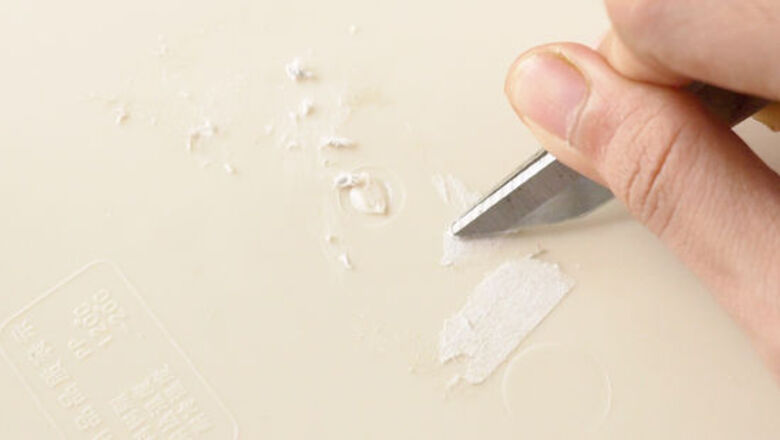
views
- Remove as much residue as you can mechanically with a plastic scraper, packing tape, or a hair dryer before trying household or chemical cleaners.
- Use soapy water, vinegar, cooking oil, or even peanut butter or mayo to saturate the adhesive, then wipe the spot clean with a cloth or paper towel.
- Try acetone, rubbing alcohol, WD-40, or commercial cleaners on extra stubborn residue spots.
- Use oily cleaning products on non-porous surfaces only, and keep acidic or corrosive cleaners like vinegar away from stone and metals.
Plastic scraper

Use a plastic scraper, credit card, or plastic knife on any surface. Lay the edge or blade of your scraper as flat as possible against the sticky surface to avoid scratches, then scrape and chip away at the sticker residue. If needed, wipe the spot clean afterward with soapy water. Alternatively, use your fingers to roll the adhesive bits into balls you can pluck off or use a rubber eraser to rub the residue away. Plastic is unlikely to scratch glass or painted surfaces if you use it carefully. It’s usually best to try cleaners or chemicals to get sticky residue off glass, though. For tough residue on surfaces you don’t mind scratching up, try a metal paint scraper or a razor instead. Scrape away from you to avoid accidental injury.
Packing tape
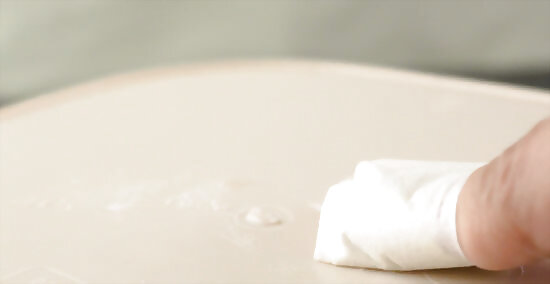
Use a strip of packing or masking tape to lift residue from any surface. Make a loop of tape to wrap around your finger (sticky side out) or hold a piece of tape with both hands. Apply the sticky side of the tape to the residue and forcibly rub the sticker residue away. Use a strong touch, since the tape will resist sliding across the surface. Keep rubbing until the residue is gone or you’ve removed as much as possible (you may need to wipe the spot clean afterward to get rid of the rest). If the tape loses its stickiness, grab a new piece and continue rubbing. The adhesive on the tape will grab the sticker residue and pull it away.
Hair dryer
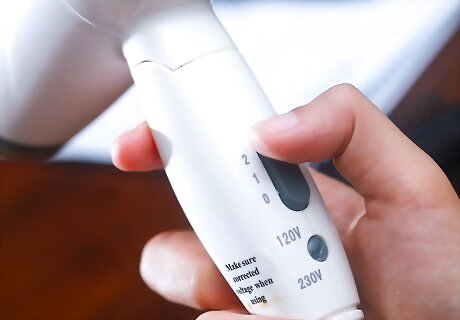
Dry out the adhesive with a hair dryer on any surface except plastic. Set the hair dryer to the highest heat setting and blast the residue spot for up to 3 minutes. Hold the dryer about 2 in (5.1 cm) or so away from the surface. Once the adhesive dries up, use your fingers or a scraper to scratch it away. If needed, follow up with a cloth dampened with soapy water or vinegar. Steer clear of plastics, which can melt under the heat, or surfaces that are part of electronics (like your laptop or a TV).
Soapy water
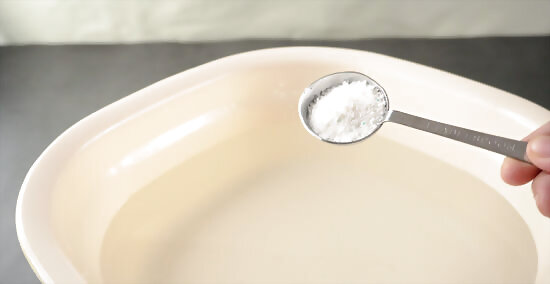
Wash walls or water-safe objects like glass jars in hot, sudsy water. Fill a large bowl with hot water from the tap, then mix in a splash of dish soap until the water is soapy and bubbly. Submerge your item in the bowl and wait about 15 minutes for the water to saturate the adhesive left on the surface. Remove the object and wipe away the remaining residue with a clean cloth (dab the cloth in some distilled, white vinegar if the residue is super stubborn). When you fill the bowl with water, leave enough space to add your sticky object without causing the bowl to overflow. If your object is too big to submerge, like a spot on a wall, soak a cotton pad or cloth in the soapy water and hold it to the sticky area instead.
Cooking oil
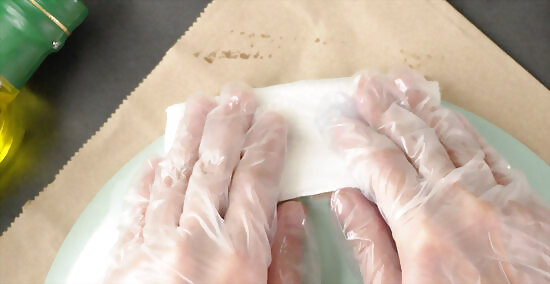
Saturate residue on non-porous surfaces with any kind of cooking oil. Use a sponge or cloth to dab a thin layer of vegetable, olive, or coconut oil over the sticker residue (you don’t need a lot). Let the oil sit for at least 30 minutes or up to 2 hours. Use a clean cloth soaked in hot, soapy water to clean off the oil and reside afterward. If you’re not sure if oil will stain, drip a drop of oil onto a test spot and wipe it away. If it wipes away without a trace, then it’s safe to use. Oil is great for sensitive surfaces since it contains no strong chemicals or abrasive ingredients. Just keep it away from clothes or fabric, which could stain.
Oil and baking soda
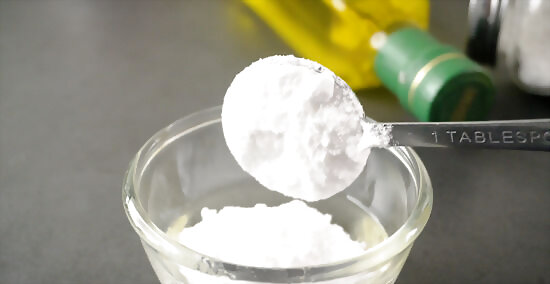
Dissolve residue on non-porous surfaces with an oily baking soda paste. In a small bowl, combine and stir equal amounts of cooking oil and baking soda to form a thick paste. Rub the paste onto the sticky spot and let it sit for 30 minutes. Use a clean paper towel or cloth to wipe the paste (and residue) away. Only use oil-based cleaners on non-porous surfaces like glass, metal, or plastic. Oil can seep into and stain materials like fabric or wood. Store any unused paste in a plastic bag and use it to fight future sticky spots. Use baking soda to clean multiple things around the house like grout, sinks, laundry, and more.
White vinegar
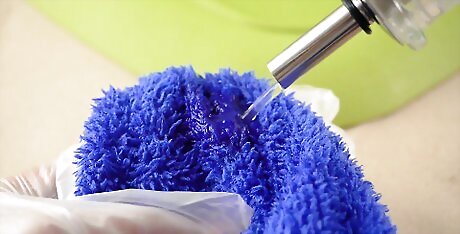
Use vinegar anywhere except on marble, stone, aluminum, or cast iron. First, soak a cotton pad or clean cloth in distilled, white vinegar and lay the cloth over the sticker residue for at least 15 minutes. Remove the cloth and use it to rub the residue away. Repeat for extra sticky or large spots until all of the residue is gone. The acid in vinegar can erode or damage things like marble or stone countertops or cast iron skillets. Use vinegar to clean windows, laundry, metal, grout, and more around the house.
Peanut butter

Loosen stubborn residue on any surface with a smear of peanut butter. Cover the residue spot entirely with a layer of peanut butter and let it sit for at least 5 minutes (or longer for tough spots). Then, wipe the peanut butter away with a clean cloth and wash the spot with soapy water. Try peanut butter first if you’re not sure which cleaners or chemicals are safest for your surface. The oil in peanut butter will loosen residue without seeping into porous surfaces (unlike using just oil or an oil and baking powder paste).
Mayonnaise
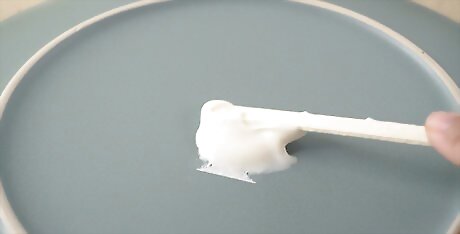
Slather mayonnaise onto any non-porous surface to soften residue. Spread a thin layer of mayo over the entire sticky spot and let it sit for about 15 minutes. Then, grab a clean cloth and rub the mayo and residue away. Repeat as necessary until the residue is gone. Wipe the spot clean with a clean cloth to remove any last bits of mayo. Steer clear of mayonnaise for surfaces like wood or fabric, which can get stained by the oil in the mayo.
Rubbing alcohol (hard surfaces)
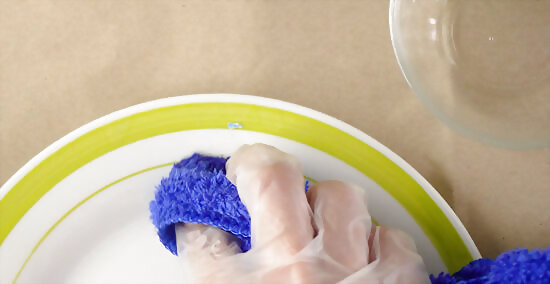
Scrub any surface with rubbing alcohol or hydrogen peroxide. Douse a cotton pad or cloth in rubbing alcohol or hydrogen peroxide and let it sit on the sticky surface for several minutes. Then, use the same damp cloth to rub the sticker residue away. If you don’t have either chemical on hand, try substituting vodka (avoid sweet or flavored alcohols that can leave their own stickiness behind). Rubbing alcohol dries quickly and leaves no residue of its own behind, making it a great household product to clean with. Rubbing alcohol is usually the fastest and most effective method for metal and plastic surfaces.
Rubbing alcohol (clothing)
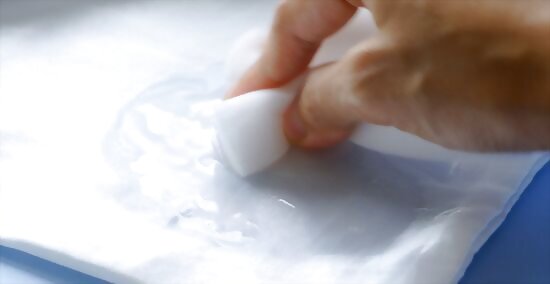
Wipe residue from clothes, fabric, and upholstery with rubbing alcohol. Soak a cotton ball in alcohol and rub it all over the sticky spot, then scrape away as much residue as you can. With a new soaked cotton ball, rub away as much of the lingering stickiness as possible. Wash the garment with laundry detergent as normal. If you’re out of rubbing alcohol, substitute and use vodka, white vinegar, nail polish remover, or commercial cleaning liquids like Goo Gone in the same way. Alternatively, spot clean the alcohol-soaked area with hot, soapy water and a soft-bristle brush. Rinse with a damp, clean cloth and let air dry.
Acetone

Wipe residue off glass, plastic, or metal with acetone. Douse a cotton pad or cloth with acetone (or nail polish remover), then let the cloth sit on the sticky spot for a few minutes. Use the damp cloth to rub the spot until the residue wipes away easily. Use acetone in a well-ventilated space so you don’t inhale any fumes accidentally.
WD-40
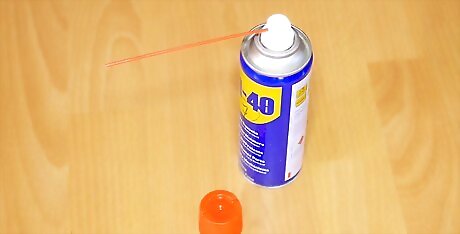
Dissolve the adhesive with WD-40 on any surface except clothing. Spray WD-40 onto the sticker residue so it’s generously covered, then let the chemicals sit for at least 3 minutes. Use a cloth or scraper to rub or scratch the residue away, then wipe the spot dry with a clean cloth or paper towel. Afterward, wash the spot with soapy water to remove any last traces of the WD-40. WD-40 has a variety of cleaning and repairing abilities. Use it around the house to break in leather, get grease out of clothes, and more.
Commercial cleaners

Use residue removers like citrus cleaners or Goo Gone on any surface. Read the directions of whichever product you choose before applying to stainable surfaces or clothing. In general, just spray the cleaner onto the sticky spot and let it sit for a few minutes. Then, wipe the cleaner and gunk away with a clean cloth. Products like Goo Gone are safe to use on most surfaces, but may leave an oily residue behind. Use soapy water to clear up any leftover product.











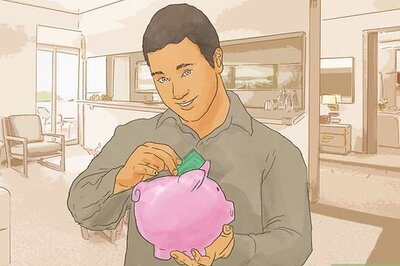







Comments
0 comment